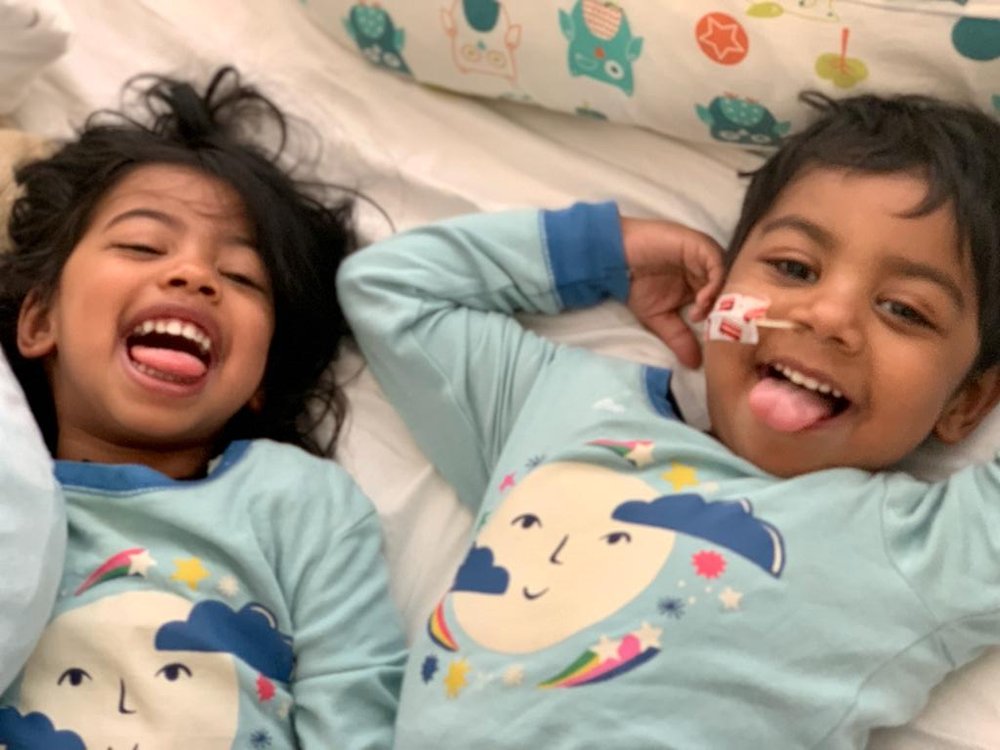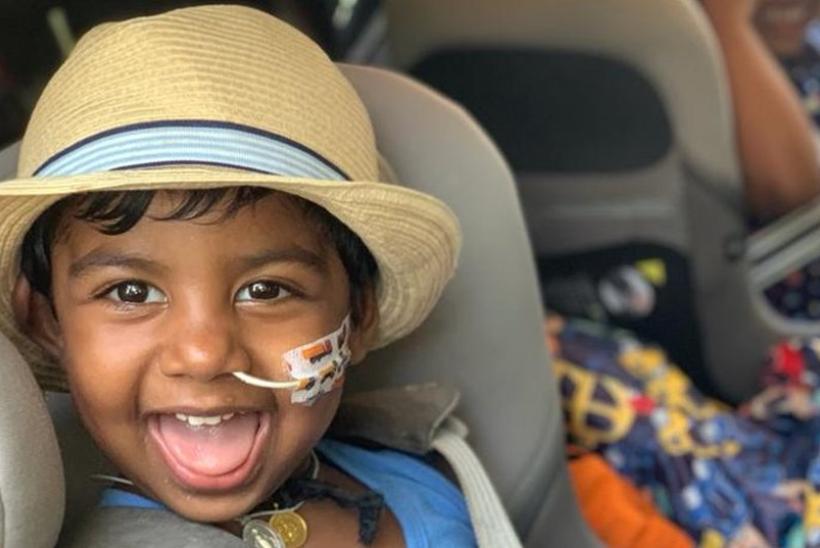Reducing oxygen levels for children in intensive care will save lives
A new landmark study across the NHS, led from Great Ormond Street Hospital (GOSH), has found that reducing oxygen levels for critically ill children on mechanical ventilators in intensive care could save tens of young lives each year.
It could also reduce the number of days a child spends on machine to support their organs, saving the NHS £20 million every year.
Children in intensive care
In the UK, around 20,000 children are admitted to intensive care each year and roughly 75% will receive additional oxygen through a ventilator.
Oxygen is one of the most common treatments used in emergency situations. Doctors and nurses adjust oxygen treatment based on how much oxygen their patient has in their blood. While very low oxygen levels are harmful, current research shows that slightly lower than normal levels may be the best target for very ill people.
The Oxy-PICU study is the largest randomised controlled trial ever conducted in paediatric intensive care units (PICUs). The researchers recruited 2,040 children from 15 NHS PICUs across England and Scotland. Each of the children required a mechanical ventilator and extra oxygen on admission to the PICU.
The children, who ranged from newborn up to 16 years, were randomly allocated to one of two groups: they received oxygen to the standard target level of oxygen (saturation “SpO2” >94%), or a reduced oxygen target (SpO2 88-92%).
Wide-ranging benefit
The researchers found that the children who received the lower level of oxygen were 6% more likely to have a better outcome, either in terms of survival or the number of days spent on machines supporting their organs.
The researchers anticipate that if the approach was scaled up across the NHS, it could save 50 lives, 6,000 ICU bed days and £20 million annually in the UK alone, reporting in The Lancet.
Professor Mark Peters, Consultant Paediatric Intensivist at GOSH and Professor of Paediatric Intensive Care at UCL Great Ormond St Institute of Child Health, and lead author on the study, said: “Giving the minimum safe dose of anything in intensive care appears to generate the best outcomes, so we wanted to test this approach with oxygen. We found a small benefit of lower oxygen targets that is unlikely to have been due to chance. But because so many children are treated with oxygen, this has the potential to improve outcomes and reduce healthcare costs in the UK and around the world. This could have particular implications in countries where oxygen is a scarce resource, or in situations as we have seen in recent years, where health needs change, and oxygen demand quickly peaks.”
Noah's story

Noah (right) with his twin sister, Naima
When two-year-old Noah was diagnosed with leukaemia in May 2022 after a trip to A&E at Hillingdon Hospital, his family were devastated. In order to give him the medication he urgently needed, the doctors had to sedate him, and he was quickly transported for treatment at Great Ormond Street Hospital (GOSH).
Mum Dilly says: “We were told Noah had blood cancer but we didn’t know what kind it was - it was really overwhelming. But the team came in and looked after him, they told us everything they were going to do, every step of the way and he had 1 to 1 care which I thought was amazing.”
Noah was in the ICU for around 4 days to support his organs while he received care. While there, his parents consented to him taking part in the Oxy-PICU trial as part of his recovery journey. He was later transferred to the oncology ward.
Dilly said: “I was so stunned when we got to the ICU, it was like a spaceship. I was in awe of all the machines, in shock really, and exhausted as it was the middle of the night.
“What was amazing was how he recovered. For three months he’d had almost no facial expressions – we hadn’t seen him smile. But then his daily Occupational Therapist Mary came one day and you could see him try to smile at her toys. After that session we could see him slowly getting better.
"This was a hard time for the family but Naima [Noah's twin sister] has kept us going! She is a ball of energy – our little cannonball - and because she’s exactly the same age as her brother, she was an exact guide for what he could achieve."
“This September, we signed up to nursery and we were worried Noah may not be able to do a full day but he’s thriving there! This is the first time we have been separated for longer periods and I can see that he loves learning and exploring.
“If Noah, or we as a family, can help children, parents and families through research we are happy to. He was one of the first people to try many of the research projects we have signed up to and it makes us proud that Noah has been able to help give some answers that could help someone else and it’s all part of our journey.”
Nurse-led research
Lauran O’Neill, Senior Critical Care Research Nurse at GOSH, said: “This is a major milestone study, which was nurse-led, with research taking place at the bedside as part of normal clinical care. It’s a great example of a research-hospital vision as every child admitted to ICU was screened for inclusion into the study.
“Although GOSH teams were managing the study and a major recruiter, undertaking the research process was part of the standard of care for many emergency teams across the country - so training and education was the focus. We had to work well together across all collaborating hospitals to deliver this huge success for our patients.”
Professor Marian Knight, Scientific Director for NIHR Infrastructure, said: “The purpose of all NIHR health and care research is to save or improve lives in some way, whether by questioning what we currently do or introducing new practice.
"This landmark nurse-led study has challenged the accepted practice for providing oxygen to children in intensive care in a way that could have a global impact. We are proud to have supported Prof Peters and his team through both our Health Technology Assessment programme, our Biomedical Research Centre at GOSH, and with our remarkable NIHR research nursing staff.”
Collaboration
The Oxy-PICU study is funded by the NIHR’s Health Technology Assessment programme and supported by the NIHR’s Biomedical Research Centres at GOSH and UCLH.
This study led by researchers from Great Ormond Street Hospital (GOSH) and University College London, the Intensive Care National Audit & Research Centre and the Paediatric Critical Care Society Study Group. Participating hospitals spanned the NHS, including Alder Hey Children’s Hospital, Birmingham Children’s Hospital, Bristol Royal Hospital, Evelina London, John Radcliffe Hospital, King’s College Hospital, London, Leicester Children’s Hospital, Nottingham Children’s Hospital, Royal Hospital for Children, Greater Glasgow and Clyde, Royal Manchester Children’s Hospital, Southampton General Hospital, St George’s University Hospital, St Mary’s Hospital, The Great North Children’s Hospital.
All research at GOSH is supported by the NIHR GOSH Biomedical Research Centre.


